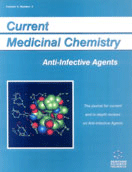Abstract
Among the antiviral agents developed for the treatment of human viral infections, nucleoside analogs represent the largest group. However, much remains to do to improve their pharmacokinetic properties, to increase their efficacy, to reduce the selection of drug-resistent strains and to reduce their toxic side effects. Towards this end many nucleotide dimers have been synthesized in the last years in several laboratories. Such compounds have several advantages compared to the administration of nucleoside analogs as single drugs: 1) can act as prodrugs for a slow delivery of monomers in circulation; 2) can be encapsulated into autologous erythrocytes to perform as bioreactors converting a non diffusible dimer into a diffusible nucleoside analog to be released in circulation; 3) can be targeted to macrophages by proper drug targeting systems; 4) can overcome the limiting phosphorylating activities of several infectable cell types; 5) can have the advantage of a combination therapy with the administration of a single compound. In this review, dimers developed in our laboratory will be reported. In particular, the heterodinucleotide AZTpPMPA and the homodinucleotide Bis-PMEA are shown to be able to act as prodrugs when administered to mice releasing the single monomer in circulation. The homodinucleotide AZTp2AZT and the dimer AZTp2EMB once encapsulated in human erythrocytes are converted by erythrocyte enzymes into diffusible nucleosides and slowly released from the carrier cells. The dimers AZTp2AZT, AZTp2ACV, ACVpPMPA, AZTpPMPA and Bis-PMEA were targeted to macrophages where a very effective protection against virus replications was obtained. Thus, nucleotide dimers could be used as effective prodrugs for drug delivery in the treatment of viral infections improving the pharmacokinetic of single moieties and can be efficiently targeted to selected cell types with intracellular release of a phosphorylated (active) nucleoside.
Keywords: homodinucleotide, heterodinucleotide, anti hiv-1 activity, anti hsv-1 activity, pharmacokinetic properties, erythrocytes, human macrophages, murine aids
 10
10

